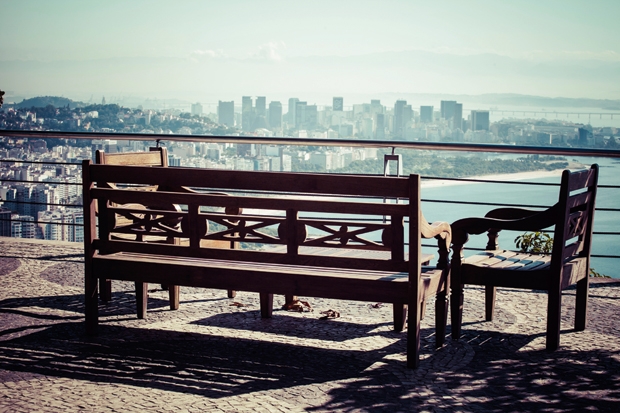Rio de Janeiro scared me at first. I landed at night in a rainstorm and from the airport took a taxi whose driver had no idea where I was going. I did not speak Portuguese; he did not speak iPhone. We drove through dark streets where the 7ft fences around each smart apartment block gave way to the concrete walls of the favelas. At the cocktail bar where we made our first stop, two burly men stood at the drive clutching machine guns. This didn’t calm my nerves.
I suppose that partly I was overwhelmed by the scale of the city and its looming ambition. Publicity photographs of Paris or London are taken from street level, gazing up at the Eiffel Tower or the London Eye. The typical postcard of Rio offers a God’s-eye view over Christ the Redeemer’s shoulder. It’s beautiful, but it does not give much idea of what it feels like to stand on a wide boulevard, gazing up at the Sugar Loaf in 30-degree heat while 12 million people bustle around you. Ipanema and Copacabana are just as disconcerting: long strips of bright sand where there ought to be docks. This is a city where no city has a right to be, crammed between emerald hills and glowing shore. Buildings flow like lead into every crevice. Heaven knows how anyone gets around.
Yet they do. When the clouds burnt off the next day, I looked for a beer in the leafier enclaves. With narrow streets and baroque mansions, Santa Teresa feels like a Mediterranean village hiding on a hill. Like Hackney, it was once home to the rich but fell out of fashion. It’s now having a renaissance driven by creative types, with all the little restaurants and boho bars that implies. Further west, Jardim Botanico, as the name suggests, is another green and pleasant place to hang out. I tired quickly of the all-the-meat-you-can-imagine rodizio joints, but there are lots of alternatives — try Volta for stylish food. Afterwards head to Baixo Gavea, a street corner where men sell tins of beer from carts while young Cariocas chat each other up. It turns out that just standing around in Rio can be the most fun thing to do.
Now that it has got through the World Cup and a tight presidential election, Brazil has to prepare for the Rio Olympics in 2016. It is a bit like hosting the family for Christmas knowing that you have friends round on Boxing Day, too. The fears that bubbled over during the World Cup, about whether these jamborees are a sensible use of taxes in a country that badly needs schools and hospitals, or if the venues would be ready in time, are already starting to reappear. If my time in Rio suggested anything, the best parties are not always those that are most promising when you arrive.






Comments